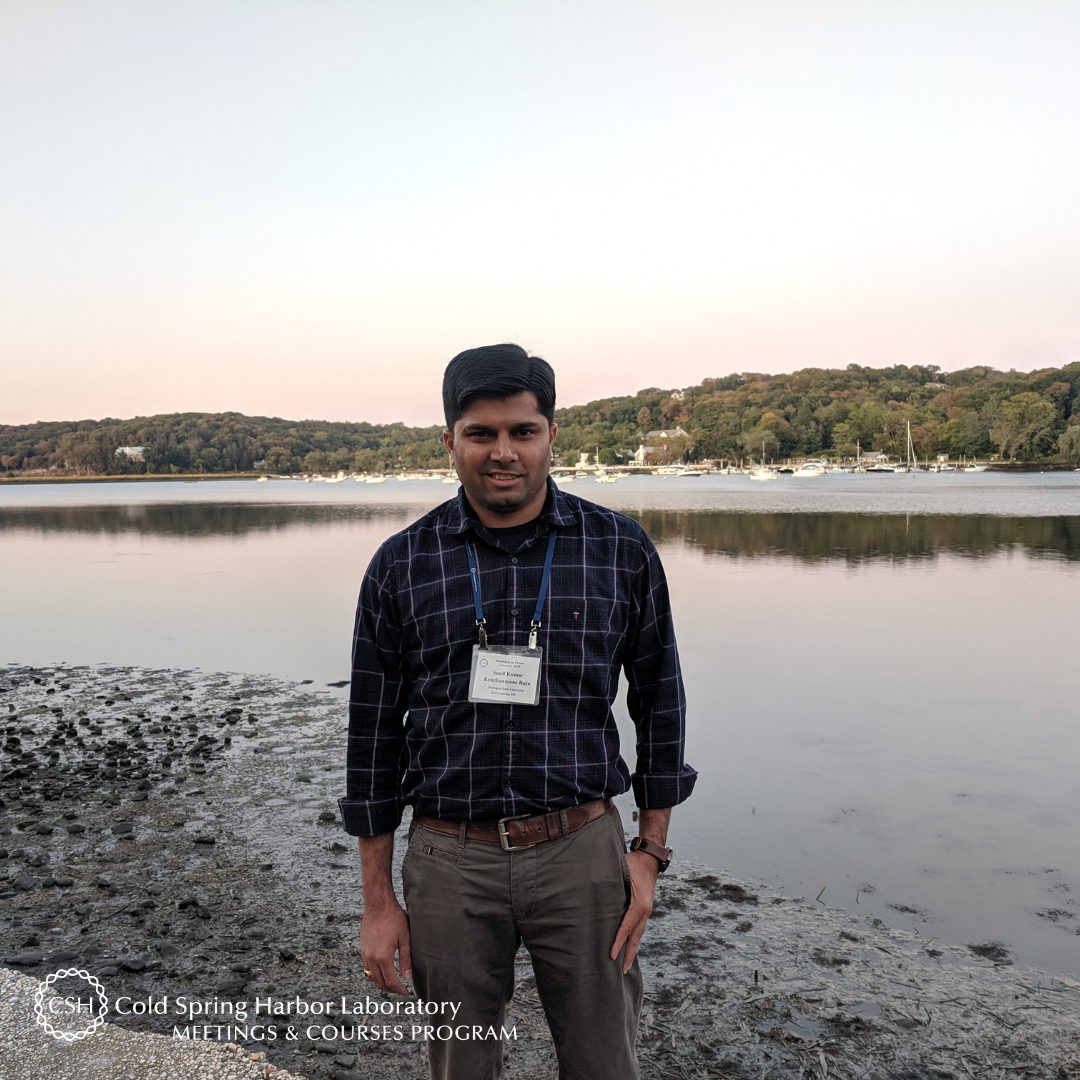Meet Burcu Alptekin of Montana State University. The Ph.D. Candidate has her eyes on a Spring 2020 graduation date. Burcu is a member in Dr. Andreas Fischer lab which focuses on studying the cereal senescence processes, and is currently with us for her first meeting at CSHL: Plant Genomes, Systems Biology and Engineering. She may have set foot on our North Shore campus with little knowledge of it but she quickly picked up on the “friendly and cozy environment” our meetings embody and exude.
What are your research interests? What are you working on?
I am generally interested in plant molecular biology from a basic science point of view. Currently, I am working with malt barley to improve the quality of barley seeds for malt production with molecular genetics.
How did you decide to make it the focus of your research?
I was always interested in molecular biology. It is fascinating to me that there are these tiny molecules in every cell determining the way of life. After my undergraduate education in molecular biology, I decided to focus on genetics and got into the plant genetics field by working with wheat and barley.
How did your scientific journey begin?
I always wanted to be a scientist. Starting from my first introduction to biology via science classes at the primary school, I was already fascinated with cell, genes in general, and everything related to molecular biology. I decided to study molecular biology when I was like 14 and have been working on that goal since that day. I got my undergraduate degree in Molecular Biology and Genetics from Istanbul Technical University (Turkey) where I got opportunity to be exposed to many different research fields. During my undergraduate, I had several internships in cancer biology and neuroscience but during a molecular physiology lecture, when we had to dissect the sciatic nerve from a frog, realized that human genetics was very much not for me because I was afraid to perform experiments on animals. Meanwhile, I discovered that plant genetics is much more complex than humans, because you have a bunch of polyploid organisms with multiple genomes. I was fascinated by this and decided to work in plant molecular biology and genetics.
Was there something specific about the Plant Genomes, Systems Biology and Engineering meeting that drew you to attend?
CSHL is known for its good courses and seminars, and its great science. I decided to attend this meeting because there were a lot of experts in the field attending and as a Ph.D. candidate, I thought it would be great to learn from experts in the field as well as my peers in a historic place of biology. Also, I am particularly interested in plant synthetic and systems biology, this was one of the limited meetings in the field where you can get exposed to these subjects.
What is your key takeaway from the Meeting?
With all of the technological advances, it is great to be a plant molecular biologist in today’s world. We can advance agriculture and our society in such a way where everyone will able to access food and I believe we will able to achieve this in a sustainable way thanks to the developing new technologies. This meeting also reminded me that this is one of the most exciting times in history to be a biologist.
What and/or how will you apply what you’ve learned from this meeting to your work?
I learned a lot of new things and techniques. I realized how epigenetics is becoming more and more accessible in plants and how it can advance our knowledge of plant biology. I also made some great contacts that I plan to maintain as I continue into my postdoctoral studies.
If someone curious in attending this meeting asked you for feedback or advice on it, what would you tell him/her?
I would highly recommend coming to this meeting. They will find a chance to learn cutting edge science from experts in the field. Plus compared to some big conferences, it is a smaller sized meeting where you get a lot more chances to network with others.
What do you like most about your time at CSHL?
I really like the environment in CSHL, all the trees around and historical buildings. I also really like the biological sculptures around such as the polypeptide sculpture. It is a dream place for a biologist.
Thank you to Burcu for being this week's featured visitor. To meet other featured scientists - and discover the wide range of science that takes part in a CSHL meeting or course - go here.









